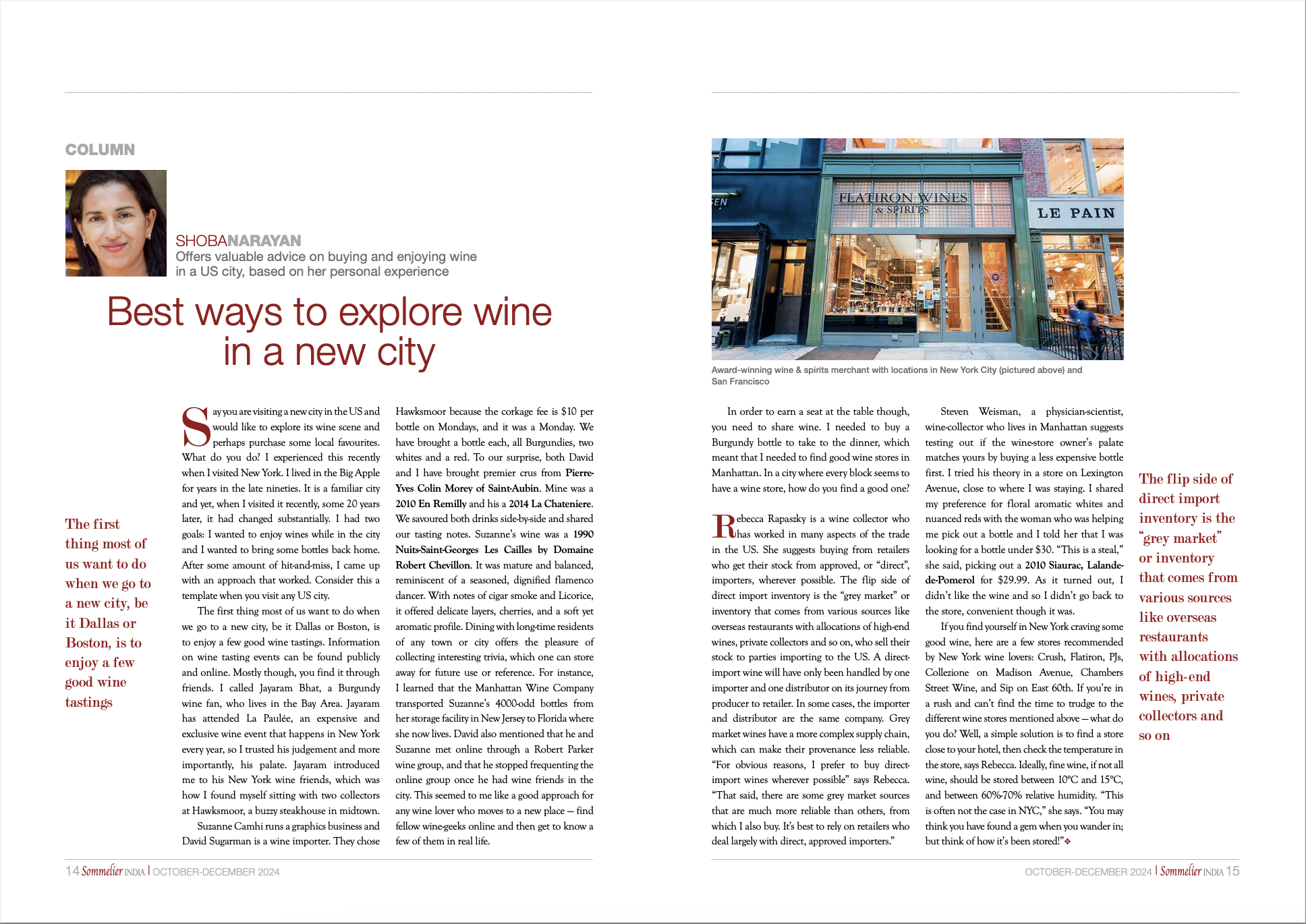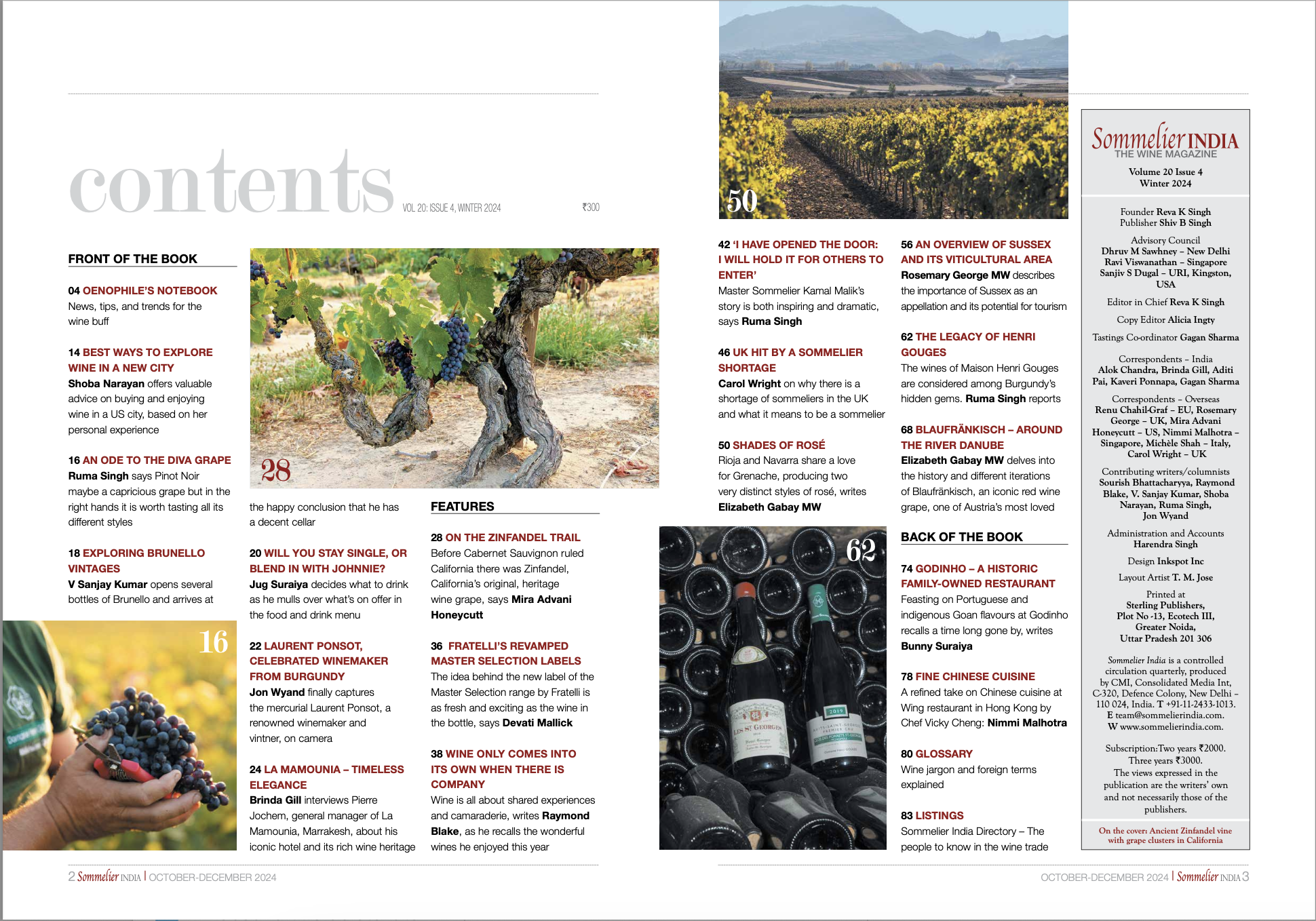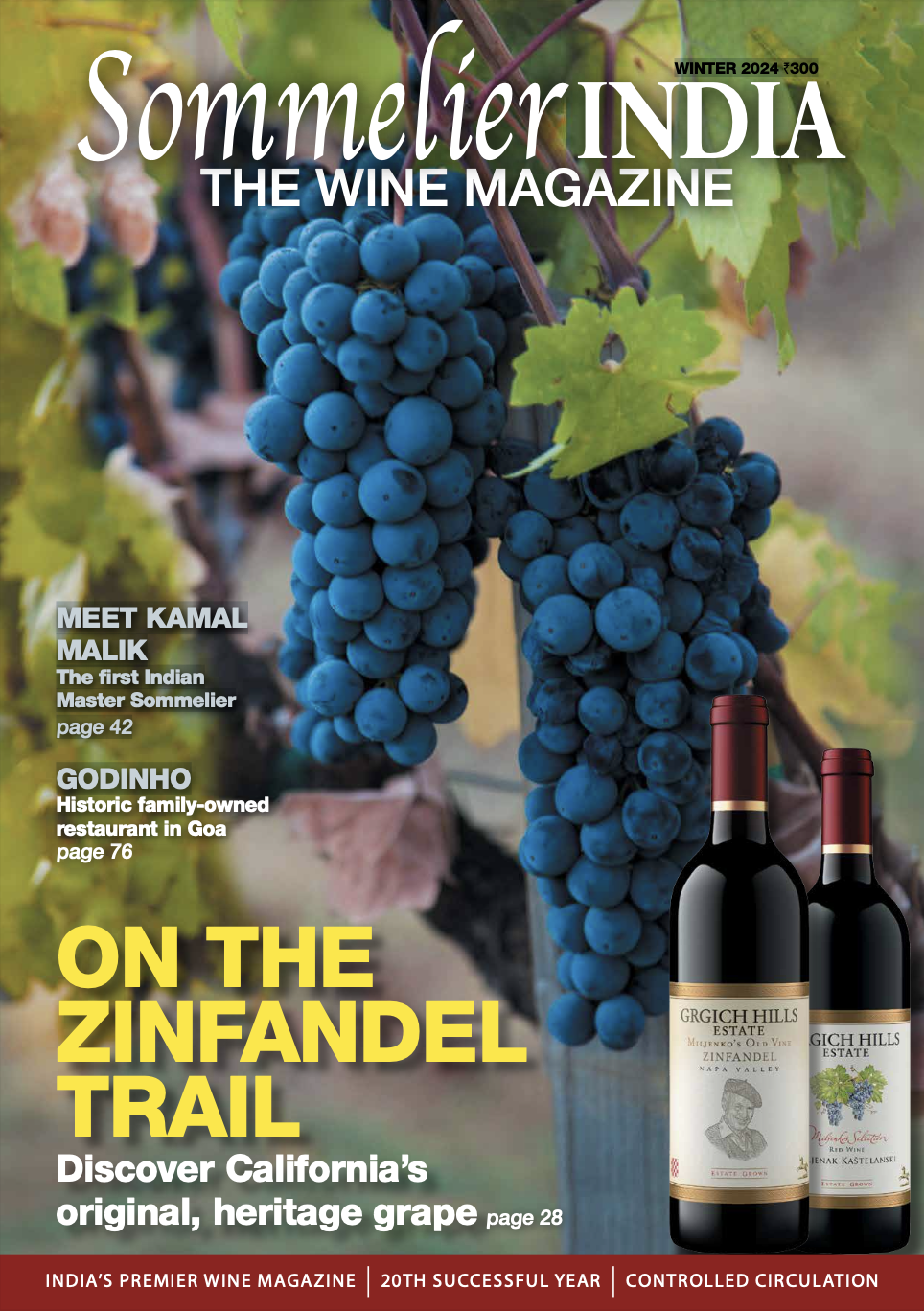Say you are visiting a new city in the US and you want to taste and buy wine. What do you do?
I experienced this recently when I visited New York. I lived in the Big Apple for years in the late nineties. It is a familiar city and yet, when I visited it recently, some 20 years later, it had changed substantially. I had two goals: I wanted to enjoy wines while in the city and I wanted to bring some bottles back home. After some amount of hit-and-miss, I came up with an approach that worked. Consider this a template when you visit any US city.
The first thing that most of us want to do when we go to a new city, be it Dallas or Boston is to enjoy a few good wine tastings. A lot of this information can be found publicly and online. Mostly though, you find it through friends. I called Jayaram Bhat, a Burgundy wine fan, who lives in the Bay Area. He has attended La Paulee, an expensive and exclusive wine event that happens in New York every year. I trusted his judgement and more importantly, his palate. Jayaram introduced me to his New York wine friends, which was how I found myself sitting at Hawksmoor, a buzzy steakhouse in midtown with two collectors.
Suzanne Camhi runs a graphics business and David Sugarman is a wine importer. They have chosen Hawksmoor because the corkage fee is $10 per bottle on Mondays at this restaurant. We have brought a bottle each, all Burgundies, two whites and a red. To our surprise, both David and I have brought premier crus from Pierre-Yves Colin Morey of Saint-Aubin. Mine is a 2010, his is a 2014. Mine is En Remilly and his is La Chateniere. We drink both side-by-side and share our tasting notes. Suzanne’s wine is a 1990 Nuits-Saint-Georges Les Cailles by Domaine Robert Chevillon. It is mature, balanced, like an aging dignified flamenco dancer. Cigar smoke, licorice, delicate layers, cherries, soft yet aromatic.
The pleasure of dining with longtime residents of any town or city is the trivia that you collect, which you can store away for future use or reference. I learned, for instance, that the Manhattan Wine Company transported Suzanne’s 4000-odd bottles from her storage facility in New Jersey to Florida where she now lives. I learned from David that the two of them met online through a Robert Parker wine group, and that he had stopped frequenting the online group now that he had wine friends in the city. This seemed to me like a good approach for any wine lover who moves to a new place – find fellow wine-geeks online and then get to know a few of them in real life.
In order to get a seat at the table though, you need to share wine. I needed to buy a Burgundy bottle to take to the dinner, which meant that I needed to find good shops in Manhattan. In a city where every block seems to have a wine store, how do you find a good one?
Rebecca Rapaszky is a wine collector who has worked in many aspects of the trade in the US. She suggests buying from retailers who get their stock from approved, or “direct”, importers, wherever possible. The flip side of direct import inventory is the “gray market” or inventory that comes from various sources like overseas restaurants with allocations of high-end wines, private collectors, etc. who sell their stock to parties importing to the US. A direct-import wine will have only been handled/managed by one importer, then one wholesaler/distributor, on its journey from producer to retailer. In some cases, the importer and wholesaler/distributor are the same company. Gray market wines travel a more complicated logistical path in the supply chain; the provenance may not be as reliable. Says Rebecca, “For obvious reasons, I prefer to buy direct-import wines wherever possible. That said, there are some gray market sources that are much more reliable than others, from which I also buy. It’s best to rely on retailers who deal largely with direct, approved importers.”
Steven Weisman, a physician-scientist wine-collector who lives in Manhattan suggests testing out if the wine-store owner’s palate matches yours by buying a less expensive bottle first. I tried his theory in a store on Lexington Avenue near where I was staying. I shared my preference for floral aromatic whites and nuanced reds with the woman who was helping me pick out a bottle and told her that I was looking for a bottle under $30. “This is a steal,” she said, picking out a 2010 Siaurac, Lalande-de-Pomerol for $29.99. As it turned out, I didn’t like the wine and so I didn’t go back to the store, convenient though it was.
Here are a few stores recommended by New York wine lovers: Crush, Flatiron, PJs, Collezione on Madison Avenue, Chambers Street Wine, and Sip on East 60th. Suppose you are in and out of New York on a weekend though and you don’t have time to trudge to the different wine stores mentioned above – what do you do? Well, one shortcut is to go to the stores near your hotel, checking the temperature in the store itself, says Rebecca. Ideally, fine wine–if not all wine–should be stored between 50 F and 59 F, and between 60%-70% relative humidity. “This is often not the case in NYC,” she says. “You may think you have found a gem when you wander in; think of how it’s been stored!”







Leave A Comment